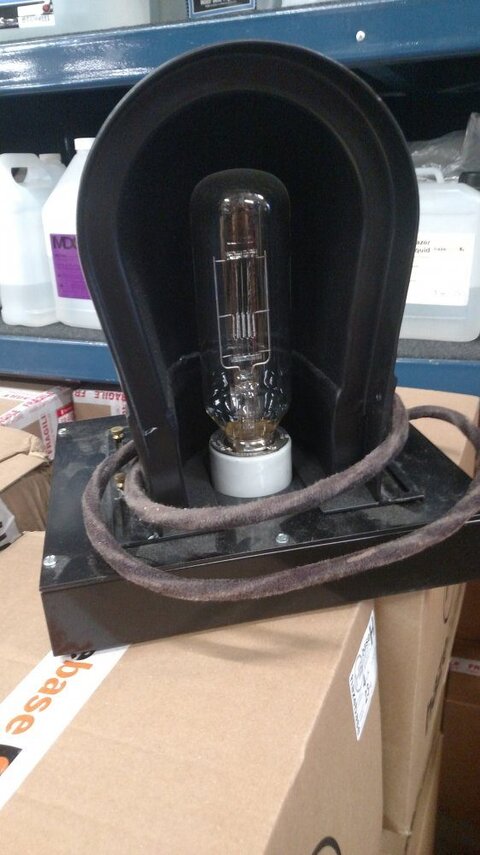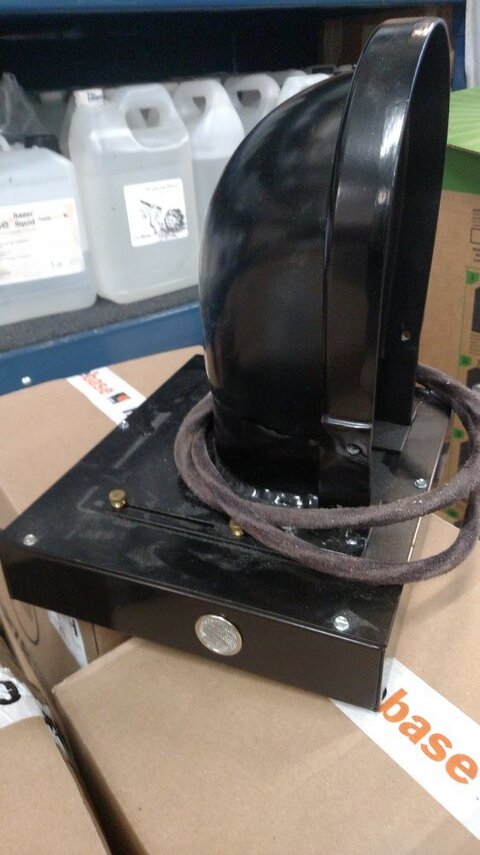You are using an out of date browser. It may not display this or other websites correctly.
You should upgrade or use an alternative browser.
You should upgrade or use an alternative browser.
Brighter than a Source Four
- Thread starterjds10011
- Start date
RickR
Well-Known Member
Make it blue-ish,
http://us.rosco.com/en/products/filters/r3204-half-blue-ctb
@FMEng and @ship I believe what Brian's saying is: If you're not using long / life // reduced color temperature lamps and thus changing to a higher color temperature lamp is not an available option for you, Brian's suggesting you can fool patrons' eyes with 1/8, 1/4 and 1/2 blue color temperature corrector. (Brian dragged me here from ProSound about 14 years ago back in 2004 thus I'm fairly fluent in Brian-ese.)In English PLEASE?
Toodleoo!
Ron Hebbard
DELO72
Well-Known Member
In English?
1) he is assuming the poster isn't using Long-Life 750W lamps (or 120V), as that is a sure fix right there- use the standard 750W 115V 300 hr. lamp.
2) CTB = Color Temp Blue. It's a color correction gel that is designed to emulate an increase in color temperature by raising the perceived color temperature from 3200K --> 4000K, or similar with limited hue saturation. For instance: Rosco # 3208 1/4 Blue CTB Color Conversion Gel Filter
KyleAnderson
Member
Seconding this. Almost any single instrument isn't going to look bright compared to a general wash at full intensity in the prior scene. Do you get any time in near black before the look? If so, extending that time a few seconds may help.
Another approach may be finding a new place to hang your fixture, as well. If it doesn't ruin your composition, then bringing it significantly closer to the actor will make a difference.
What about adding another fixture that is very precisely focused to not cast a shadow? A pin spot to the face, perhaps, or a straight down top light that does not significantly alter the shadow you want to see?
BillConnerFASTC
Well-Known Member
Go for the super bright. It will be better. Then ad a couple more so when you fade the MF leko, the shadow not only dims but defocuses. Did that with a kodak ektagraphic (sp?) dimming and defocusing at ssme time. Cool desolve, on scrim.
Go all out. Rarely is being clever and economical confused with being an artist and brilliant. Well, the opportunities for the latter are rare enough. Take them all.
Go all out. Rarely is being clever and economical confused with being an artist and brilliant. Well, the opportunities for the latter are rare enough. Take them all.
Last edited:
TNasty
Active Member
If money and rigging were of no importance, a "fun" option would be fitting a Bug-A-Beam 1600 and Joker 1600 on the fixture. With that kind of power, I'd probably budget for "Full Body Combustion Prevention and Thermal Shielding Jumpsuits" for the poor souls who happen to get caught in the beam of light (and a welding mask for the LD).
Granted, I'd never really recommend doing all that for impracticality and safety reasons, but it would be interesting... Director: "Can we make that more bright?" LD: "Yeah, just give me a moment here." Director: "Okay, can we make that less bright?"
Granted, I'd never really recommend doing all that for impracticality and safety reasons, but it would be interesting... Director: "Can we make that more bright?" LD: "Yeah, just give me a moment here." Director: "Okay, can we make that less bright?"
JD
Well-Known Member
This is the key. The human eye has a bright-to-dark ration of about 1,000,000 BUT not at the same time! At any one given time it's about 10,000 to 1. So, if you have been in a dark cave and come out, EVERYTHING will be super bright. Go from the sunlight into a well lit room, it still seems dark.
As was said, the scene leading up to this is just as important as the fixture used. Get everyone's eyes used to darkness, and it will make the effect seem that much brighter.
It's why all the Disney "dark rides" have a dark entrance queue.
Anyone have any ideas for a fixture that is brighter than a Source Four with a 750W lamp? I have a 19 degree special that the director feels is not bright enough. I cannot supplement with an additional fixture because it is for a shadow effect and only one shadow is acceptable. I have "cheated" by swapping to a 14 degree barrel, but they're not happy with this solution. I have also tried the EDLT option but don't really see much difference in intensity. And yes, I have bench-focused the instrument.
A few months ago I made 5x of these foot lights. 4x are sold & on world tours, one is spare. rental. (PM for details) Note, this is a photo early in prototype - bench focus and lamp into filament only source non-reflector center was corrected. I can post a finished version of what was done with the 1.5Kw incandescent DTJ lamp on request. I went incandescent lamp instead of a little more powerful but halogen CYX lamp so I didn't have to safety screen to it - this screening might effect optics. Such fixtures are semi-focusable in beam spread given the shroud slides front to rear but an in general wash of the stage - anywhere the talent goes. Note you can probably do this with a scoop also, it will just be a lot larger & you will have to mask the reflective surface. You only want the compact filament as the source of light for a shadow.

Last edited:
Sorry in above image wiping out at least my screen and not coming up. Can't delete, don't know why. Here is the finished product.
Something I did back in the early 90's similar was with some 2Kw incandescent Century 8" Lekos. Remove the lens train & reflectors to the radial fixtures. Block some the vents in no longer needed but adds to stray light back stage, add a painted lens and focus it on a stand assembly in front of the now scoop like assembly. The Linnebach projector is fun!
Something I did back in the early 90's similar was with some 2Kw incandescent Century 8" Lekos. Remove the lens train & reflectors to the radial fixtures. Block some the vents in no longer needed but adds to stray light back stage, add a painted lens and focus it on a stand assembly in front of the now scoop like assembly. The Linnebach projector is fun!
Attachments
Last edited:
Ted jones
Well-Known Member
There was a manufactured light called the Capitol QuartzFollow that used an FEL and was a really nice shortish range followspot. These were made in the mid-70's to the early 80's, I think. Great iris and shutters and a nicely balanced light. Much nicer to use than the Comet and had better optics. Capitol also had the Capitol SuperQ. Same light, same lamp, plus 130 VAC transformer. It was significantly brighter and made a nice light a great light. It could punch thru about anything. HOWEVER, as above, lamp life was dismal.
Similar threads
- Replies
- 7
- Views
- 557
Conventional Fixtures
ETC Source Four mini - brightest replacement bulb
- Replies
- 33
- Views
- 5K
Users who are viewing this thread
Total: 1 (members: 0, guests: 1)




